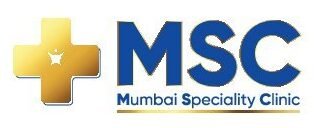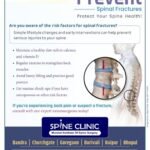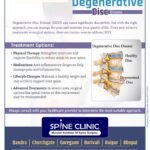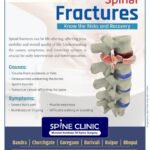Scoliosis is a condition characterized by an abnormal lateral curvature of the spine. It can affect individuals of any age but is most commonly diagnosed during adolescence. Understanding the various causes of scoliosis is essential for effective management and treatment. Here, we delve into the common causes of scoliosis as highlighted by the Spine Clinic, Mumbai Institute of Spine Surgery (MSC).
Types of Scoliosis
Idiopathic Scoliosis
- Description: Idiopathic scoliosis is the most common type, accounting for about 80% of cases. The term “idiopathic” means that the exact cause is unknown.
- Key Points: Typically diagnosed in children and adolescents. It often progresses during growth spurts.
Neuromuscular Scoliosis
- Description: This type of scoliosis is associated with neuromuscular conditions that impair the muscles’ ability to support the spine.
- Examples: Conditions such as cerebral palsy, muscular dystrophy, and spinal cord injury can lead to neuromuscular scoliosis.
- Key Points: The curvature often progresses more rapidly compared to other types.
Degenerative Scoliosis
- Description: Degenerative scoliosis occurs due to the degeneration of the spine’s discs and joints, commonly seen in older adults.
- Key Points: Often associated with arthritis and osteoporosis. It is typically less severe but can cause significant discomfort and mobility issues.
Traumatic Scoliosis
- Description: This form of scoliosis results from a spinal injury or trauma.
- Key Points: Fractures, surgeries, or any direct impact on the spine can lead to a curvature.
Syndromic Scoliosis
- Description: Syndromic scoliosis develops as part of a syndrome or condition.
- Examples: Marfan syndrome, Down syndrome, and Rett syndrome are some conditions that may include scoliosis as a symptom.
- Key Points: The management of scoliosis in these cases often involves addressing the underlying syndrome.
Diagnosis and Treatment
Diagnosing scoliosis typically involves a physical examination and imaging tests such as X-rays, MRI, or CT scans to determine the degree of curvature and its impact on the individual’s health.
Treatment Options:
- Observation: Mild cases may simply be monitored with regular check-ups.
- Bracing: In growing children, bracing can help prevent further curvature.
- Physical Therapy: Exercises can improve posture, strength, and flexibility.
- Surgery: Severe cases may require surgical intervention to correct the curvature and prevent further complications.
The Spine Clinic – Mumbai Institute of Spine Surgery
For individuals seeking expert care, the Spine Clinic in Mumbai offers comprehensive services. With branches in Bandra, Churchgate, Goregaon, Borivali, Raipur, and Bhopal, the clinic provides accessible and specialized treatment options for scoliosis and other spinal conditions.
Contact Information:
- Phone: 8657500555 / 9619100123
- Website: www.mumbaispecialityclinic.com
- Email: mumbaispecialityclinic@gmail.com
Conclusion
Understanding the causes of scoliosis is the first step in managing the condition effectively. Whether it’s idiopathic, neuromuscular, degenerative, traumatic, or syndromic, each type requires a tailored approach to treatment. For those in need of expert care, the Spine Clinic offers a beacon of hope with its specialized services and expert medical staff.
For appointments and more information, don’t hesitate to reach out to the Spine Clinic. Early diagnosis and treatment can make a significant difference in managing scoliosis and maintaining a healthy spine.














